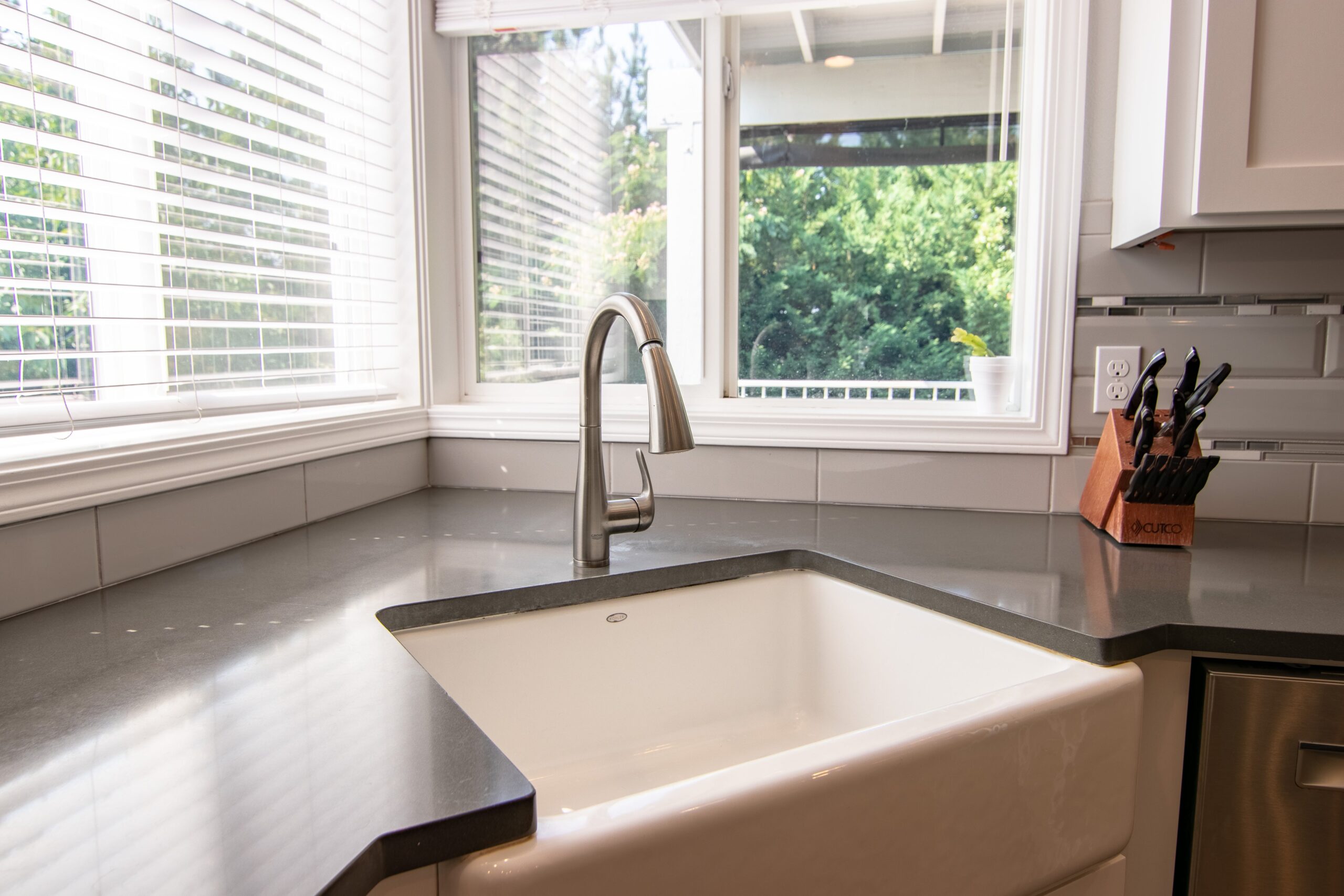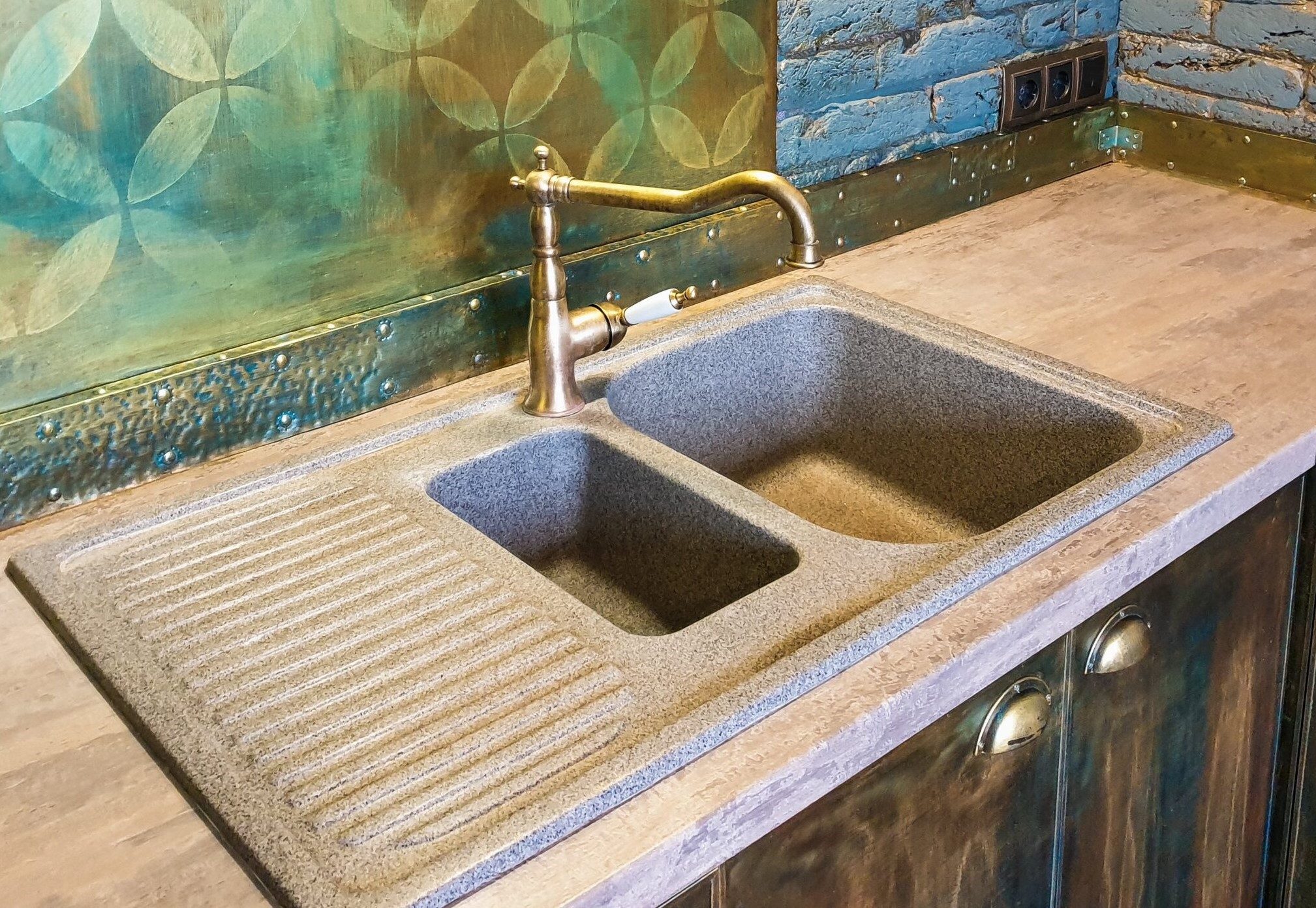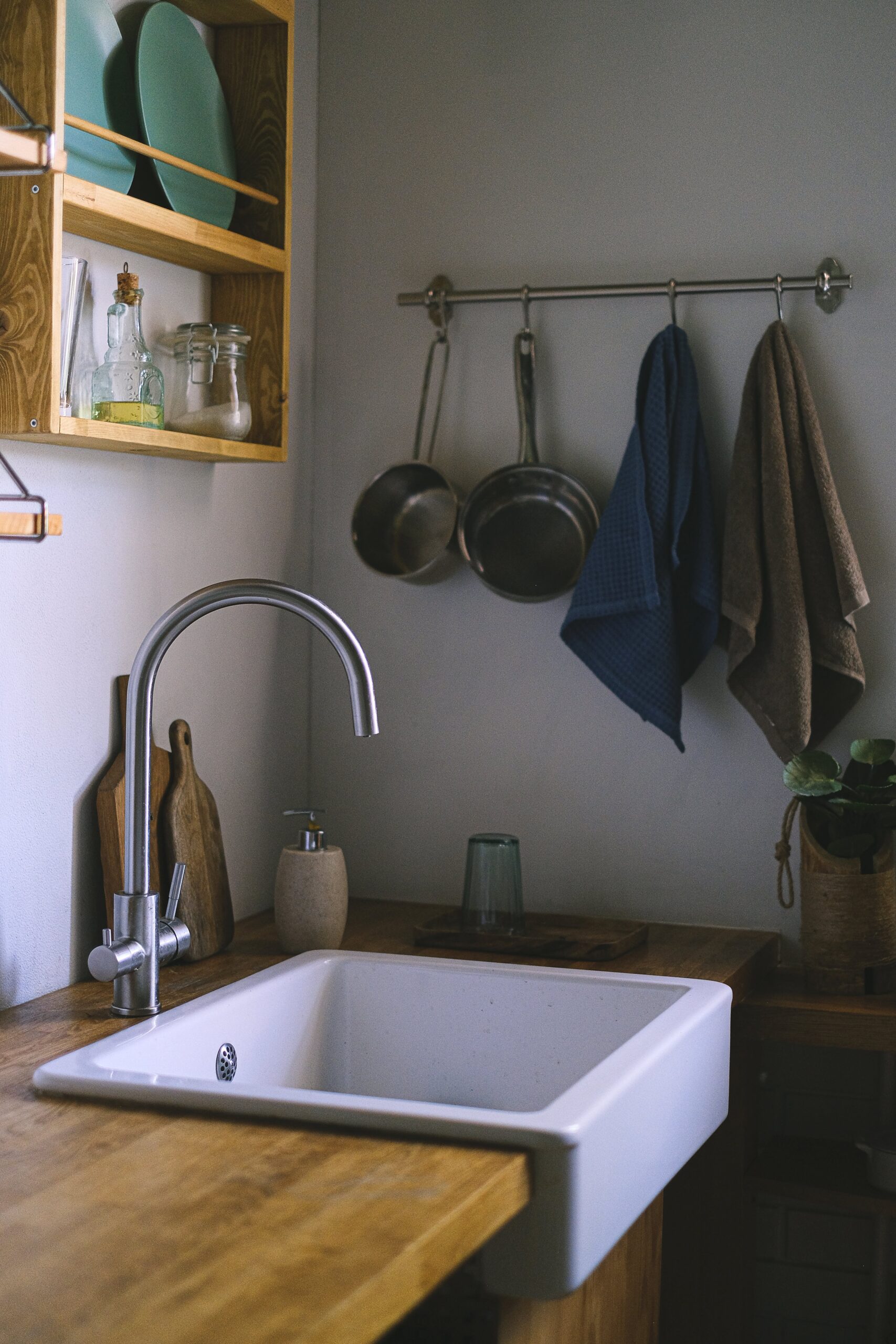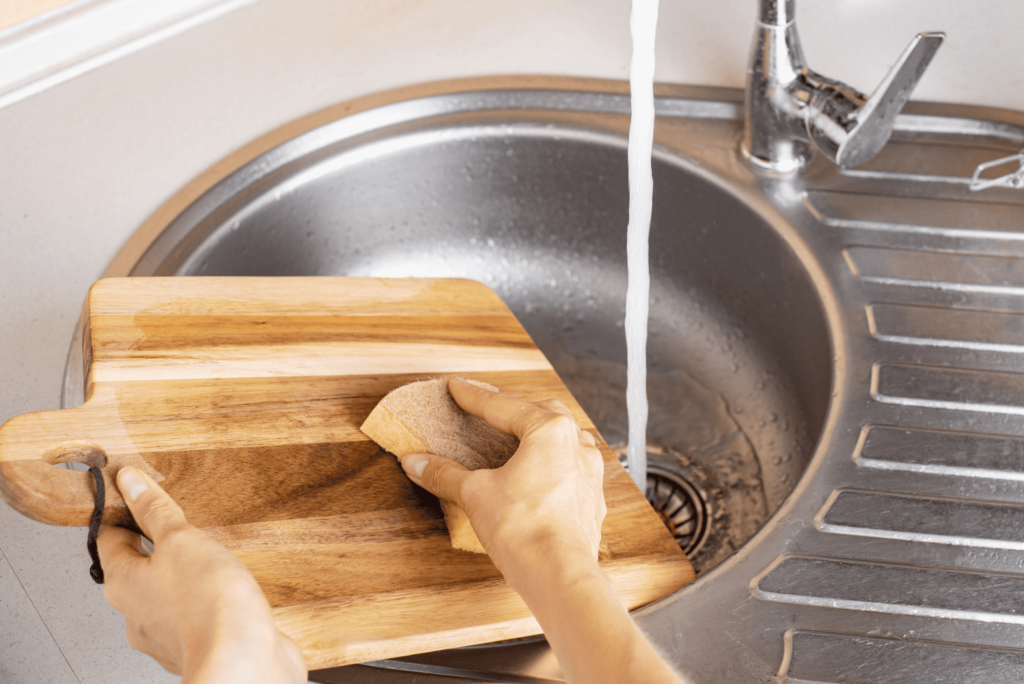Kitchen sink plumbing typically involves a drain line and a set of water supply lines. The water supply lines bring hot and cold water, while the drain removes wastewater.
Understanding the basics of kitchen sink plumbing is essential for maintaining a functional and efficient kitchen. This system includes faucets that supply hot and cold water controlled by valves, and a drainpipe that carries away dirty water. A strainer in the sink helps to catch debris, preventing it from clogging the pipes.
Beneath the sink, a trap, usually shaped like a “P” or “S,” retains a small amount of water to prevent sewer gases from entering the home. Knowing the components and their functions can be a lifesaver when it comes to troubleshooting leaks or blockages. Regular maintenance of your kitchen sink’s plumbing can prevent costly repairs and ensure it works smoothly for years to come.
Introduction To Kitchen Sink Plumbing
Kitchen sink plumbing holds vital importance in a home. Proper installation ensures efficient water flow. It also prevents leaks.
A correctly designed kitchen sink plumbing system includes a faucet, drainpipes, and sometimes a garbage disposal unit. These parts work together to bring water in and take waste out.
- Faucet: Delivers water to the sink.
- Drainpipes: Carry waste water away.
- Garbage disposal: Grinds food waste.
- Traps: Stop sewer gases from entering the home.
- Vents: Regulate air pressure in the pipes.
Every part must be in good shape for the system to work well. A strong plumbing setup is a key to a happy kitchen. Kids, remember that no clogs and no leaks mean no worries!

Components Of Kitchen Sink Plumbing
The kitchen sink is where we clean dishes and wash food. Faucets let water flow and have different styles. Installing them needs care and skill.
Drainpipes help water leave the sink. Traps stop bad smells from coming back up. Cleaning traps is important for a nice-smelling kitchen.
Water supply lines bring fresh water to the sink. They are made of copper or plastic. Good connections stop leaks and keep the kitchen dry.
A vent stops water locks by letting air into the pipes. This keeps water moving smoothly. If vents are blocked, sinks can drain very slowly.
Common Kitchen Sink Plumbing Issues
Kitchen sink plumbing problems often come out of nowhere. Grease or food scraps can cause clogs and blockages. A plunger or a plumber’s snake is a quick fix. Commercial cleaners can help but can also damage pipes. Biological enzyme cleaners may be a safer choice.
Leaks under the sink waste water and harm cabinets. The leak might be in the faucet, pipes, or drain. Tighten connections or replace worn gaskets to stop dripping. Call a plumber if the issue persists.
Problems with dishwasher drainage can lead to water backing up. Make sure the sink and dishwasher are not clogged. Check the air gap cylinder on the sink. Clean or replace it if needed.
Suffering from low water pressure? A blocked aerator is often the culprit. To fix, unscrew the aerator, clean out any debris, and screw it back on. If that doesn’t help, inspect the supply lines for kinks or blockages.

Diy Kitchen Sink Plumbing Tips
DIY kitchen sink plumbing is a task many homeowners tackle. To start, you’ll need basic tools like wrenches, pliers, and a pipe snake. Safety is crucial — always wear protective eyewear and gloves.
For simple leaks, you can often just tighten connections. With a clogged drain, try using a plunger or a plumber’s snake. Replacing a worn-out faucet washer can stop drips and doesn’t require special skills.
Complex issues demand a professional plumber. You should not attempt installing new pipes or major leaks. Call an expert when you see water damage or if your fixes don’t work.
Maintenance And Upkeep Of Kitchen Sink Plumbing
Keeping your kitchen sink plumbing in top shape demands regular attention. Clean drains and disposals frequently to avoid blockages. For effective maintenance, use a mixture of baking soda and vinegar followed by hot water. This helps to dissolve grease and food remnants. Breaking up large waste before it goes down the disposal can prevent clogs.
To dodge common plumbing problems, avoid putting hard-to-grind, stringy, or fibrous waste into the garbage disposal. Things like cornhusks, celery, and onion skins can bind up the disposal motor and block drains. Regularly check for leaks under the sink to catch issues early and save water.
Replacement and upgrades of sink plumbing parts should be done as needed. This includes hoses, seals, and washers that can wear out over time. To ensure a smoothly running kitchen sink, replace old and rusty pipes before they become a problem.
Eco-friendly Practices In Kitchen Sink Plumbing
Eco-friendly practices in kitchen sink plumbing greatly aid in water conservation. Simple tips like installing aerators on faucets reduce water flow. Leaks should be fixed promptly to prevent wastage.
Opting for sustainable plumbing materials is pivotal. Materials like recycled steel or copper last long and are less harmful. They also maintain water quality.
For eco-friendly waste disposal, consider composting. Do not use chemical cleaners. Use biodegradable cleaning products instead. With these steps, one can maintain a greener kitchen.
Best Practices For Kitchen Sink Plumbing
Kitchen sink plumbing may seem complex. Yet, understanding it ensures smooth operation and longevity. Simple practices can prevent common issues. It’s about keeping drains clear and leak-free. Regular maintenance plays a vital role in efficient kitchen sink system. Clean sinks and proper disposal of waste are key.
Proper installation and routine checks are important. They keep your system running well. A well-maintained system saves money over time. It minimizes potential problems. Keeping an eye on signs of damage or clogs is crucial. Always seek professional help with major problems. This approach will ensure your kitchen sink works well.

Conclusion
Understanding the intricacies of kitchen sink plumbing is crucial for any homeowner. It ensures a well-functioning kitchen and aids in troubleshooting issues. Remember, a skillful DIY approach can save time and money. If in doubt, always consult a professional. Keep your sink’s plumbing in top shape, and it will serve you reliably for years to come.
Frequently Asked Questions Of How Does Kitchen Sink Plumbing Work
What Is The Structure Of A Kitchen Sink Plumbing System?
Kitchen sink plumbing typically includes a drain basket, pipes, a P-trap, and possibly a garbage disposal or dishwasher hookup. These components work together to manage waste water and prevent sewer gases from entering the home.
How Does A Sink’s P-trap Function?
A P-trap is a U-shaped pipe that holds water, forming a seal that blocks sewer gases. Waste water flows through it while the standing water prevents gases from rising into your kitchen.
Can Kitchen Sinks Have Two Plumbing Lines?
Yes, double basin sinks often have two plumbing lines that merge before reaching the P-trap. This setup allows for efficient waste disposal from both sinks while maintaining a single water trap.
What Role Does A Garbage Disposal Play In Sink Plumbing?
Garbage disposals chop up food waste so it can flow easily through the plumbing. Installed underneath the sink, they connect directly to the drain and are powered by electricity.







